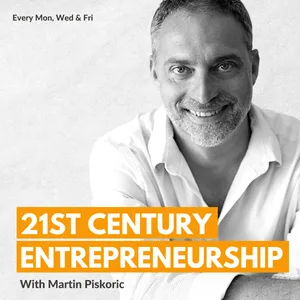Podcast Summary
Proven business models for building successful companies: SaaS businesses make up a significant portion of billion-dollar companies and Y Combinator's top 100, making it a smart choice for founders
Proven business models are crucial for building successful companies, as evidenced by the fact that a few specific models are responsible for creating nearly all billion-dollar businesses. These models include SaaS (Software as a Service), transactional, marketplaces, and a few others. SaaS businesses, in particular, make up a large percentage of the most valuable companies that have gone through Y Combinator. Founders should consider using one of these proven models rather than trying to create something new. Additionally, the YC Top 100 companies list provides valuable insights into the success of various business models. For example, SaaS businesses make up over 30% of the top 100 YC companies, while business models like advertising and e-commerce barely register. Understanding these trends can help founders make informed decisions about which business model to pursue.
Marketplaces and transactional businesses dominate YC's top 100 companies: Marketplaces (14%) and transactional businesses (22%) account for 54% of YC's top 100 companies and generate 59% of the overall value due to their network effects and critical infrastructure roles.
Marketplaces and transactional businesses are the most likely types of companies to create significant value and become dominant players in their industries within the Y Combinator (YC) ecosystem. Marketplaces, such as Airbnb and OpenSea, make up only 14% of the top 100 YC companies but account for 30% of the overall value due to their winner-take-all nature and massive network effects. On the other hand, transactional businesses, like Stripe and Coinbase, make up 22% of the top 100 YC companies but generate 29% of the overall value by being directly in the flow of funds and providing critical infrastructure for other companies. Additionally, Software-as-a-Service (SAS) businesses, which offer consistent revenue, make up nearly a third (31%) of the YC top 100 companies. Overall, these insights suggest that businesses that address marketplace dynamics, facilitate transactions, or provide essential services can create substantial value and achieve market dominance.
Recurring revenue models for venture-scale businesses: Recurring revenue models offer predictable income, higher customer LTV, lower CAC, and a stable foundation for venture-scale businesses.
Recurring revenue models are key to building successful, venture-scale businesses. These models provide predictable revenue, enabling companies to compound and grow. Advertising businesses, while well-known, are not common among the top 100 YC companies due to their reliance on organic virality and the difficulty of monetizing without significant scale. Other business models, such as services, consulting, affiliate, hardware, and those built on other platforms, also face unique challenges and are less likely to achieve venture-scale success. Recurring revenue models, on the other hand, offer higher customer lifetime values, lower customer acquisition costs, and a more stable business foundation.
Creating Defensible Businesses: Recurring Revenue, Customer Retention, and Moats: Continually delivering value to customers and creating defensible moats like network effects, lock-in, technical innovation, higher margins, and organic distribution are essential for long-term business success. Product innovation and replicating proven business models help create sustainable businesses that scale effectively.
Building a successful business involves generating recurring revenue, maintaining strong customer retention, and creating defensible moats. Recurring revenue is crucial, but it's not enough if customers only derive value initially. Instead, businesses must continually deliver value to keep customers engaged and prevent churn. Moats, such as network effects, lock-in, technical innovation, higher margins, and organic distribution, help protect businesses from competition and ensure long-term success. For instance, companies like Stripe and DoorDash have built moats through their dominant market positions and economies of scale. In contrast, a 5% difference in monthly retention can significantly impact a startup's growth, potentially leading to a loss of over half of its customers within a year. By focusing on product innovation and replicating proven business models, entrepreneurs can create sustainable, defensible businesses that scale effectively.
Use pricing as a learning tool for startups: Charging for a product is a valuable way for startups to understand customer perception, identify valuable segments, and test product value. Founders should focus on the value provided and adjust pricing accordingly.
Pricing is a valuable tool for startups to learn about their customers and business. Founders often hesitate to charge for their products due to fear of customer rejection or competition. However, charging can provide essential insights such as user willingness to pay, identifying valuable customer segments, and understanding the product's value proposition. Stripe is an example of a company that used pricing to test the value of their product by setting a higher price than competitors. When starting with pricing, founders should not overthink it and focus on finding the right order of magnitude for their pricing. Pricing is not permanent, and it takes time to capture the full value of a product from customers. Instead, pricing should be based on the value the product provides, not just the cost of production. By focusing on value, startups can better understand their customers' perception of their product and adjust pricing accordingly. In summary, charging for a product is a crucial learning opportunity for startups, and pricing should be based on the value the product provides to customers. By following these insights, startups can effectively use pricing as a tool to learn about their business and make informed decisions.
Setting Prices Based on Customer Value: Talk to customers to identify the value they see in your product, gradually raise prices to find ideal price where customers complain but still pay.
Understanding the value your customers perceive in your product and pricing accordingly is crucial for a successful business. Cost plus pricing, which sets prices based on costs to serve customers, is not recommended as it ignores the full value customers see in the product. Instead, founders should identify the value their product brings to customers by talking to them directly or gradually raising prices until receiving pushback. Many startups undercharge and leave potential revenue on the table. Remember, the ideal price is when customers complain but still pay, indicating they see value in your product.
Pricing as a competitive advantage: Charging higher prices can lead to bigger margins, a larger customer base, and a stronger competitive advantage. However, it's important to ensure the product continues to deliver value to customers at the new price.
Pricing is a crucial aspect of building a successful business, and relying solely on lower prices as a differentiator is not a sustainable strategy. Instead, charging higher prices can lead to bigger margins, a larger customer base, and a stronger competitive advantage. The price of a product often influences customers' perceptions of its value. Raising prices can be an effective way to grow revenue, but only if the product continues to deliver value to customers at the new price. If users are unwilling to pay more, it may be necessary to add more value to the product or address a more pressing customer need. Alternatively, offering a lower price in exchange for valuable early customers or lock-in can also be a viable strategy. It's important to remember that pricing is not permanent and can be adjusted as the business and market evolve. Founders should not be overly concerned about setting pricing perfectly the first time, as prices can be adjusted later as needed.
Gradually increasing prices for existing customers: Successfully increase revenue without significant churn by gradually raising prices for existing customers while maintaining current pricing for new ones, keep pricing simple and clear, and understand the perceived value of your product to price appropriately.
Pricing is a crucial aspect of any business, and it's essential to find a pricing strategy that works for you and your customers. One effective approach is to gradually increase prices for existing customers while maintaining current pricing for new ones. Companies like Netflix have successfully implemented this strategy, allowing them to grow revenue without significant churn. Another important consideration is to keep your pricing simple and clear to avoid creating friction during the sign-up process. A complex pricing structure can decrease conversion rates. Lastly, segment shared a valuable lesson about the importance of pricing appropriately based on the perceived value of your product. Initially, they undervalued their product, which led them to raise prices and experience resistance from their customers. However, by understanding the value their product brought to their customers, they were able to successfully increase their prices and grow their business.
Learning to ask for a higher price can lead to significant revenue growth: Charging for your product, pricing based on value, being willing to adjust, and keeping it simple are key insights for successful pricing strategies.
Having the courage to ask for a higher price can lead to significant revenue growth. As the story of Segment illustrates, starting out by giving away their product for free and eventually selling to large enterprises for over $3 billion was only possible after they learned to ask for and justify higher prices. This philosophy of pricing based on value, rather than cost, can help businesses increase their deal sizes and ultimately build successful businesses. However, it's important to remember that pricing isn't permanent and can be adjusted over time as a company grows and adds more value to its product. Additionally, keeping pricing simple and avoiding complexity can help streamline the sales process and make it easier for customers to make a purchase. Overall, the key insights are to charge for your product, price based on value, be willing to adjust pricing, and keep it simple.



![Pat Dorsey Returns - The Moat Portfolio - [Invest Like the Best, EP.77]](https://www.podcastworld.io/podcast-images/invest-like-the-best-with-patrick-o-shaughnessy-3pmywn1q.webp)


